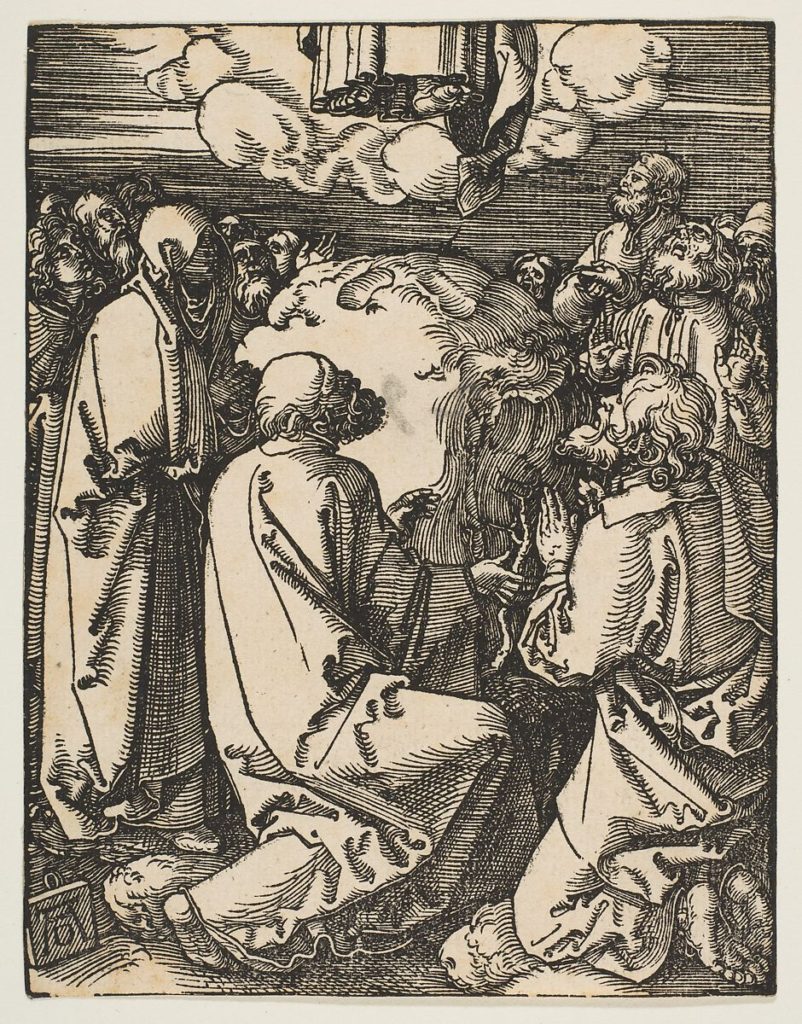At God’s Right Hand

Forty days after Easter, we celebrate Jesus’ Ascension to the right hand of the Father. After his Resurrection, Jesus performed signs, taught about the kingdom of heaven, and appeared to many people (Acts 1:3). But his time had come to be taken up to the Father so that he might fill all things and send the Holy Spirit ten days later on Pentecost.
When the time had come, Jesus went with his disciples to Mount Olivet, where he promised the gift of the Holy Spirit to those who would be his witnesses to all the ends of the earth. After giving this promise, he was lifted up and disappeared in a cloud. Two angels remained, however, and declared that the Son of Man will come again one day in the same manner in which he left.
The Ascension is a pivotal moment and a great comfort, but it is often misunderstood. John Calvin, for example, spoke of Jesus’ Ascension as his departure from earth to another physical location at the Father’s right hand. Such a teaching would leave us with a Jesus who is far away from us and the world in which we live. But that is to misunderstand the Ascension!
Jesus doesn’t speak of the “right hand of God” as a locale in heaven. Rather, the right hand of God is his dominion over heaven and earth. Thus, the Ascension is not Jesus’ disappearance but his physical veiling so that “He who descended is the one who also ascended far above all the heavens, that he might fill all things” (Eph. 4:10). At the right hand of God, Jesus can be present for us wherever he chooses, especially where he promises to be: in the bread and wine of the Sacrament.
In his article for this holy day, the Rev. Joshua Scheer reminds us that the Ascension, like all of the Church’s year, is directed toward the Christian’s consolation and hope. He directs us to Isaiah 41:10:
Fear not, for I am with you; be not dismayed, for I am your God; I will strengthen you, I will help you, I will uphold you with my righteous right hand.
A Brief History
Christians in the earliest centuries celebrated the Ascension as an event of great importance, commemorating it along with Easter and Pentecost. By the fourth century, the timeline was extended so that the feast had its own day, and to this day the Church observes this feast on the fortieth day after Easter.
On the feast of the Ascension, we celebrate Jesus’ enthronement and dominion over all things. We marvel and rejoice that our Lord Jesus who shares our human nature reigns over creation at the Father’s right hand! As the hymnwriter Christopher Wordsworth wrote,
“He has raised our human nature
On the clouds to God’s right hand;
There we sit in heav’nly places,
There with Him in glory stand.
Jesus reigns, adored by angels;
Man with God is on the throne.
By our mighty Lord’s ascension
We by faith behold our own.”
Or in the words of St. Augustine: We “are already in heaven with him, even though what is promised us has not yet been fulfilled in our bodies.”
Collect
Grant, we beseech Thee, Almighty God: that like as we do believe Thine only-begotten Son, our Lord Jesus Christ, to have ascended into the heavens, so may we also in heart and mind thither ascend and with Him continually dwell; who liveth and reigneth with Thee and the Holy Ghost: ever one God, world without end. Amen.
Lessons
Resources:

Celebrate Ascension Day by learning about this great event over chicken salad sandwiches (with homemade mayonnaise!).

The Gottesdienst Crowd interview with the Rev. Rick Stuckwisch on the Ascension
Issues, Etc. interview with the Rev. David Petersen on the Ascension

Propers found in Daily Divine Service Book: A Lutheran Daily Missal, edited by the Rev. Heath Curtis
References:
1. Pfatteicher, Philip H. Journey into the Heart of God. Oxford University Press. 2013.
2. Scheer, Joshua. “The Right Hand of God.” Steadfast Lutherans. May 28, 2014, https://steadfastlutherans.org/2014/05/the-right-hand-of-god/
Images:
1. The Ascension, from The Small Passion, Albrecht Dürer, Germany, 1510.
2. The Ascension of Christ, Hans Süss von Kulmbach, Germany, 1513.



[…] and his encouragement to the disciples, whether it’s on the road to Emmaus, on the Mount of the Ascension, or in the upper […]